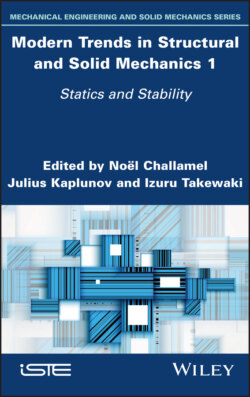Читать книгу Modern Trends in Structural and Solid Mechanics 1 - Группа авторов - Страница 20
1.4. Remarks
ОглавлениеThis work differs from the classical Ritz method in that the basis functions are not required to satisfy the essential boundary conditions. In the Ritz method, we can use a penalty parameter to enforce essential boundary conditions in a weak sense and use the present basis functions. In the traditional finite element method (FEM), we discretize each layer into disjoint domains called finite elements (FEs) and the compact support of the FE basis function for a node equals all FEs sharing that node. We could use the FEM by first taking the inner product of the nine governing equations Ra = 0 with a nine-dimensional test function and integrating the result over the laminate. The matrix K in K A = F will not be symmetric. We can improve on the accuracy of the numerical solution by either increasing the order of polynomials in the basis functions or reducing the element size or both. Even though we have not tried it, in general, it takes more computational resources than those needed for the present least-squares approach. Of course, only using one FE with the current basis functions is possible. Then, the difference will be in deriving matrices K and F and satisfying boundary conditions.
